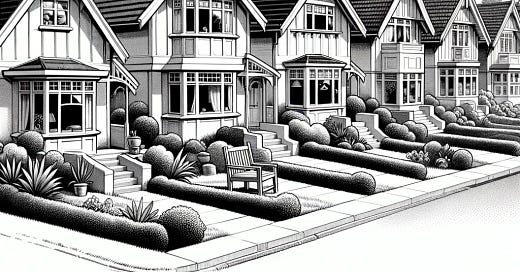Victims of abusive tenants are not NIMBYs
And the new nine most terrifying words in the English language
Ronald Reagan said that the nine most terrifying words in the English language are "I'm from the government, and I'm here to help."
Fast forward to present-day New Zealand and we have a new champion in the scary nine word category: "We're Kāinga Ora and we are your new neighbours."
Neighbours from Hell
The apprehension is not unfounded. The previous government fostered an environment permissive of abusive tenants. And while not all Kāinga Ora tenants - nothing close to a majority, in fact - the abusive minority is significant enough to have led to widespread community backlash against social housing.
Loud parties into the small hours, property damage and literal violence. These things have created a deep sense of bitterness and resistance against Kāinga Ora's presence in residential communities.
There are no shortage of well meaning liberals who fob off these anxieties as the concern of snobs. But this is quite out of order. For one thing, some of the people suffering the most are other Kāinga Ora neighbours.
But more to the point, the home is meant to be a sanctuary. An inconsiderate neighbour intrudes on that sense of security and peace. An abusive and threatening one makes life unbearable.
A world with no consequences has consequences
The severity and prevalence of the problem becomes starkly evident with a simple internet search for the phrase "Kainga Ora death threats." There seems to be no end of distressing accounts and news reports detailing instances of antisocial behaviour, intimidation and harassment inflicted by social housing residents on their neighbours.
Weakness is a provocation and matters have been made worse by a reluctance to evict or impose other meaningful consequences on abusive tenants. For years, thousands of complaints resulted in precisely no evictions. We’ve now seen a handful of them though not commonly or swiftly enough to put the community at ease.
Kainga Ora has more commonly moved abusive tenants from house to house, spreading the abuse around. And so this reluctance is perceived by both Kainga Ora residents and neighbours alike as a tacit tolerance for what should be unacceptable behaviour.
The National-led government now wants to strike a different balance. Quite naturally, political and media opponents are horrified by the idea. The idea that somebody would lose their state subsidised house just because they menace their neighbours with a axe, however, does not seem so unreasonable to most people.
Keep reading with a 7-day free trial
Subscribe to The Blue Review w/ Liam Hehir to keep reading this post and get 7 days of free access to the full post archives.





